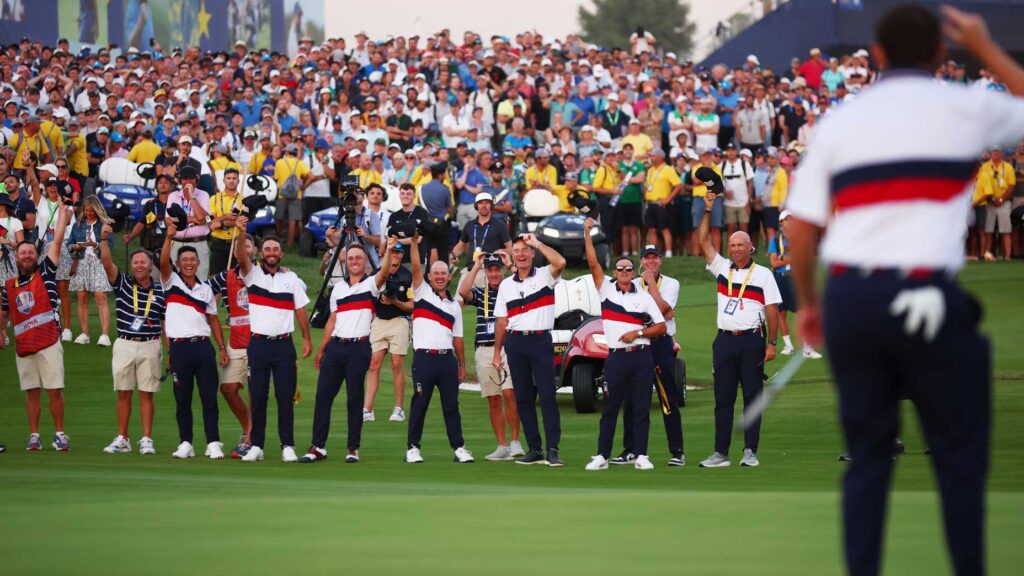In a recent press conference, Tiger Woods discussed the topic of American players potentially being paid extra to play in the Ryder Cup. This issue arose from reports that U.S. Ryder Cup players were set to earn a $400,000 stipend in 2025, which they would not have to donate to charity, unlike the current $200,000 given to each player for donation. Woods expressed support for the idea of players receiving additional compensation, suggesting amounts ranging from $1 million to $5 million to be distributed to charities of their choice. However, Woods’ comments also highlighted the need for clearer messaging from the U.S. team, particularly in comparison to the European team’s stance on the matter.
The European side of the Ryder Cup is heavily influenced by the European Tour, which relies on profits from hosting the event to sustain its operations. Players such as Rory McIlroy, Jon Rahm, and Shane Lowry have strong ties to the European Tour and view their participation in the Ryder Cup as a way to support the tour and grow the game in Europe. In contrast, the U.S. team represents the PGA of America, which uses the Ryder Cup as a fundraiser for its initiatives to promote and develop golf in the United States. The differing motivations of the two teams underscore the importance of aligning messaging within the American team to convey their objectives and priorities regarding compensation for participating in the event.
Woods’ comments hinted at a desire for more transparency and clarity from the PGA of America regarding how revenue generated from the Ryder Cup is used to benefit the growth of golf in the U.S. He also suggested that players would like more control over where the funds raised through the event are directed towards charities they support. While these requests are reasonable, the lack of clear communication and messaging from the U.S. team has left room for speculation and uncertainty around their intentions and motivations for seeking additional compensation. In contrast, the European team has been proactive in addressing the issue, with players like McIlroy emphasizing that their focus is on the competition and not on financial incentives.
The strategic messaging adopted by the European team has positioned them favorably in the public eye, presenting a united front focused on the spirit of competition rather than monetary rewards. This approach has effectively conveyed their commitment to the Ryder Cup and has resonated with fans and supporters. In comparison, the lack of cohesive messaging from the U.S. team has left them vulnerable to criticism and scrutiny, highlighting the importance of establishing a clear and unified stance on the issue of player compensation. Moving forward, it will be essential for the American team to address these concerns and communicate their objectives effectively to ensure that they are perceived positively by fans and stakeholders.
Ultimately, the debate surrounding player compensation in the Ryder Cup reflects broader discussions within the sports industry about the value of athletes and the importance of fair remuneration for their contributions. As the golfing world continues to evolve, it is crucial for organizations like the PGA of America to adapt to the changing landscape and prioritize the well-being and interests of their players. By fostering open dialogue and collaboration, both the U.S. and European teams can work towards a more equitable and mutually beneficial relationship that enhances the Ryder Cup experience for players and fans alike. The success of future Ryder Cup events will depend on the ability of all parties involved to address these issues constructively and transparently, ensuring a bright and sustainable future for the prestigious tournament.


